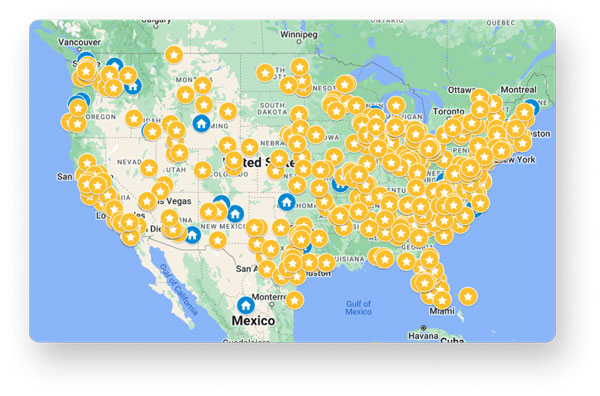Special-education teachers are among the most underappreciated professionals, but they are also among the most important. Unfortunately, there is a shortage of special-ed teachers in schools, particularly in areas that experience high poverty. An astonishing 48 of 50 states and Washington, D.C. lack a sufficient number of these educators. Special-ed teachers often leave the profession in droves– at twice the rate of general education teachers, usually within the first ten years of teaching. They often cite burnout; low pay; lack of support from supervisors; and lack of training, which includes professional development.
There are many stressors that can lead to the burnout cited by special-education teachers who have left the field. Below are ten that are often cited:
1. Scheduling logistics
In addition to the obvious task of classroom lesson planning, special-education teachers have to coordinate their schedules with other faculty members and with parents. These tasks take up a great deal of time, sometimes even more than the task of teaching itself.

2. Thorough data presentation
Special education is a constantly-evolving field. This evolution is the result of solid, conclusive data that validates teachers’ methods of instruction. Educators must collect data, of course. But they must also present it in a clear, clean, and concise manner that backs up their statements about students’ progress. This arduous, time-consuming task is valuable, but also highly stressful. It is crucial to equip teachers with tools to help collect accurate data consistently and generate clear graphical presentations of that data to visualize student progress. If you or your teachers do not yet have a tool, check out fastIEP. It helps teachers monitor progress with a single click, and automatically generates charts for progress reports.
3. Paperwork
The aforementioned data presentation is rife with paperwork– for multiple students. The most important part of the paperwork is the individualized education plan (IEP). The IEP lists the student’s disabilities, goals, and accommodations. Once per marking period, in preparation for an annual IEP meeting, special-education teachers need to update the IEP. These updates must reflect the student’s progress and changes in goals. It might sound like a fairly straightforward task for one student. However, it is important to remember that most special-education teachers work with dozens of students. Having tools available to your teachers will dramatically reduce the burden of paperwork during these periods.
4. Mediating between parents and faculty
A special-education teacher must be in constant communication with general-education teachers and the parents of the special-ed students. Special-ed teachers must make sure that the general-ed teachers are properly adhering to the student’s IEP. A special-ed student’s progress can be negatively impacted if a teacher is not providing the appropriate accommodations or modifying the work as outlined in the IEP. A teacher deliberately not following the IEP is a violation of federal law. This can lead to a very uncomfortable discussion between both educators.
In terms of the parents, it’s important for a teacher to appropriately address situations in which parents and teachers disagree with the proper approach for educating the student. A parent may feel that it is the teacher’s fault if a student is not doing well in class. It is often up to the special-ed teacher to address and de-escalate the situation.
5. Unsupportive parents of special-ed students
Most parents support their children. However, there are occasionally some who are not adequately invested in their children’s progress in school. It is crucial that parents of special-ed students are aware of their child’s progress and regularly communicate with teachers. Without this bridge connecting home life and school life, students are less likely to live up to their potential. This makes the teacher’s already difficult job much harder.
6. Dealing with parents of typically-developing students
A special-ed teacher who works in an inclusive classroom may have to interact with parents of typically-developing students. Some parents lack understanding of the importance of accommodations for special-ed students. They might feel that this population is being given preferential treatment at the expense of their children. It is a worn, outdated cliché that adjusting the curriculum or settings for certain students is “unfair to the others.” Teachers need to be able to assure parents that their children’s needs– even if not “special” needs– are being met.
7. Unfair public criticism
It is not only important for special education teachers to be supported by their colleagues, but also by the public. Special-ed teachers often report that the public underestimates how difficult their job is. It is common for the everyday person to think that teaching is easy because educators don’t work in the summer. Some people may view teaching as a kind of “glorified babysitting.” Nothing could be further from the truth, and special-education teachers especially bear the brunt of this misconception.
8. Training paraprofessionals
In order to best support special-education students, it is often imperative for teachers to have paraprofessionals in the classroom. However, teachers need to train paraprofessionals in the ways to best support their students. They must also supervise them– in addition to teaching the class. This requires additional time and resources, which teachers are often not compensated for. For some teachers, providing structured digital tools to help aid paraprofessionals in aspects of their job, like logging goal progress, can help alleviate some of the supervision time. It is also important that teachers and paraprofessionals are in agreement with their perspectives on teaching and working with students.
9. Behavioral concerns
It is very common for students with learning disabilities to experience increased anxiety and frustration around school. This may lead to instances where a student does something inappropriate. They might throw a book across the room or shout swear words at the teacher. It is important for the teacher to understand the root cause of the behavior and de-escalate the situation. The teacher should help the student learn more appropriate ways to deal with frustration and anxiety. This, of course, can be very difficult. This is especially true if the child also has an emotional disability, a separate issue from school-related anxiety. Unfortunately, many special-education teachers often lack the appropriate support and resources to address these complex issues and help these students thrive.

10. Teaching students with profound disabilities
Students with more profound disabilities require more accommodations and one-on-one attention than many special-education students. Special-education teachers require extensive training in working with this population. With staff shortages and without the appropriate resources and lack of support– from colleagues and from parents– it may prove to be too much of a challenge for even the most enthusiastic and compassionate educators.
Resources


